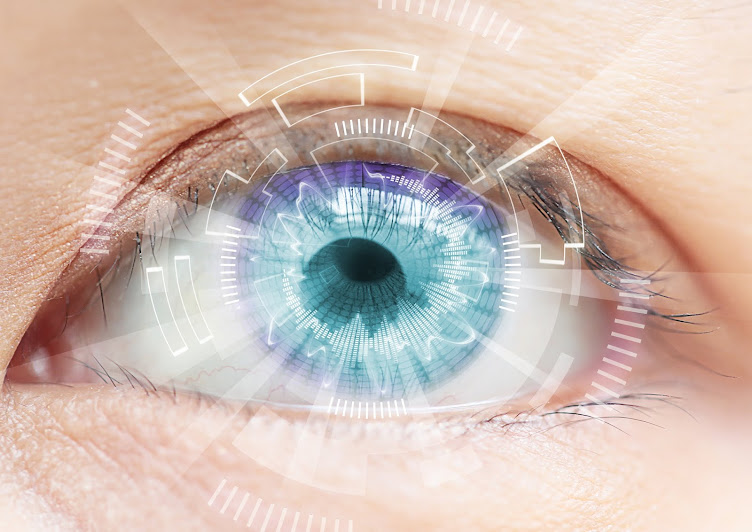A contact lens is a type of lens that is inserted directly into the eye to help people see better. They are a different option than glass. They have to be prescribed by an eye doctor. Some contact lenses can be used multiple times, while others are disposable products that are used only once and then discarded.
Every wearer has a different reason for using contact lenses. However, in our experience, the main reasons why our customers want the option of contact lenses in addition to glasses are:
Convenience: For example daily disposable does not require cleaning or maintenance (unlike glass)
Many wearers
prefer the shape of contact lenses over glasses and find it to be a confidence booster.
Many people cannot enjoy their favorite sports without contact lenses. Most people start wearing contact lenses for sports and stop using them in all areas of their lives as they discover these benefits.
Contact lenses can be divided into the following groups
Daily Disposables - Replaced with a fresh pair every day.
Two Weekly Disposables - Replaces every two weeks with a fresh pair.
Monthly Disposables - Replacing each month with a new pair.
Extensive wearable lenses - can be worn continuously while waking and sleeping.
Torque lenses - for patients with lenses.
Multi-Focal Lenses - Provides one-stop correction for patients who cannot see clearly at long and short distances
Color Contact Lenses - Fashion lenses for those who like to change the natural color of their eyes.
If you are currently wearing glasses and want to try contact lenses, you should first check the contact lenses with your optician. He or she will take you through the entire process of installing contact lenses. Your ophthalmologist will first check if your eyes are suitable for contact lenses (most people have). He will then teach you how to insert and remove your contact lenses and will also show you how to clean and care for them. You will then be given a test set of contact lenses, which usually lasts a week. At the end of the test week you will see your eyes again and they will make sure that your eyes respond well to the glasses. At this point you will buy and wear a three month supply of contact lenses from your optician. After three months, you will see your eyewitness for the last time in a timely manner and he will write you a prescription. Make sure you get a copy of your prescription. Now you are officially fitted for contact lenses and you can buy them from any supplier.
Wash your hands with soap, rinse thoroughly and dry with a clean towel. Place the contact lens on the palm of your hand, check that it is clean and not cracked. Inside out (if it is, the edges will lighten slightly) and place it on your index finger (your index finger). Insert the lens. Use your index finger on your opposite hand to avoid blinking. Use the third finger of the hand in which you have the contact lens to press your lower eyelid. Look up and place the contact lens on the white part of your eye. Look down to allow the lens to slip into position. Remove your fingers and close your eyes momentarily. Your lens must be in place. Repeat the process on your other eye.
Get in the habit of putting on the lens of your right eye first. This will reduce the chances of your contact lenses being attached.
It takes a little practice to complete your technique so don't be discouraged if you are having a hard time for the first few days or weeks. If you are having difficulty inserting your contact lenses, see your contact lens optician who will be happy to observe your technique and help you improve it.
Before trying to remove contact lenses, make sure they are in the center of your eye. Cover your other eye to check that the lens is in the center. If your vision is blurred then your lens is not in the right place. Look in a mirror and place the lens in the middle with your finger. Pull your lower eyelid downward. When you pull down your eyelid, place your finger on the underside of your lens and slide it downward towards your white part. Eye Gently squeeze the contact lens between your finger and thumb and remove the contact lens from your eye.
Get in the habit of removing the lens of your right eye first. This will reduce your chances of matching contact lenses.
Place the contact lens in the palm of your hand and apply a few drops of the recommended contact lens solution to the lens. Gently rub the lens on both sides using the index finger of your opposite hand. Rinse the lens thoroughly using plenty of contact lens solution. Clean contact lenses in the appropriate compartment. Secure the lens case cap and repeat with your other contact lens. Leave your contact lenses in the lens case for at least four hours. Soaking it in the solution will disinfect the contact lens. After inserting your contact lenses into your eyes, discard the remaining solution out of the lens case. Wash the lens case with fresh solution and allow the inside of the case to dry in the open air.
Warning: Please never use water to clean or store your contact lenses. Water does not contain the materials needed to properly disinfect your contact lenses. In fact, rinsing your contact lenses with water can contaminate your lenses and is known to cause irreparable damage to the eye.
If you wear disposable daily, you don't have to worry about storing your contact lenses as mentioned above. However, if you drop your lens or something gets stuck in your eye, you may need to clean it, in which case you should follow the procedure described in steps 1 and 2 above.
It is generally recommended to wear soft contact lenses for more than 10-12 hours continuously, 5 days a week. It is recommended that you wear glasses two days a week to ensure that your eyes are getting enough oxygen to stay healthy. Extended lenses can be worn when you are awake and asleep for a week. However, it is important to know that the recommended time to wear contact lenses will vary depending on the type of lens and the wearer. Contact lens makers provide guidelines for wearing your lenses (usually found on the packaging). Please follow your optician's recommended wear schedule as it is uniquely well-kept to advise you.
You should contact your ophthalmologist if you are:
Closer to your prescription expiration date / reason for contact lens inspection (usually every 12 months)
A copy of your contact lens prescription is required.
Defective quality of your vision with contact lenses
Consider changing the contact lens solution that was not recommended by the person who installed your contact lenses.
If you experience any of the following symptoms / irritation in your eyes, please first remove your contact lenses from your eyes (even if wearing them will reduce the discomfort or symptoms) and secondly your eye specialist as soon as possible. Contact:
Feeling of pain
Headline
Excessive watering
Visual impairment
If your optician is not immediately available and the problem is causing you severe anxiety, you should consult your GP or go to your local hospital in an accident and emergency.
Aftercare "is the medical care and advice that should be provided to you after purchasing a pair of contact lenses. At a minimum, contact lens aftercare should include both advice and support to make the following arrangements:
Regular contact lens exams
Where you can go in an emergency.
What signs or symptoms should you take care of?
How to remove your contact lenses during an emergency.
Who is your local contact for advice?
Aftercare is provided by your optician and contact lens provider. And your optician is committed to providing you with all the access you need for professional medical advice and care.
Limbzest384.blog.com














